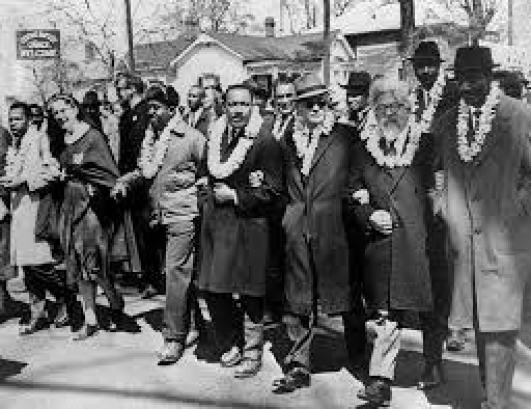One of the things I remember most distinctly from Freshman English in college was the question, “How do we read this?” Most often, it was applied to a text — a poem or a passage in a novel or essay. At times, however, the question was directed to a visual image. We would study a piece of art, or a photo from a newspaper, and “read” it. The professor was teaching us to be readers of signs, symbols, and visual imagery, pushing us to analyze the world around us and not just the written word. His goal was to enable us to become nimble critical thinkers, able to explore, probe, and question anything we confronted.
“What do we do with those pictures in the machzor?” is a question I’ve been asked about the art by Joel Shapiro that appears in Mishkan HaNefesh. This question brings me back to Freshman English.

When we read a text, by necessity we bring ourselves to that text. Our reading, our understanding, is a meeting of our particular set of experiences and references, and those of the author. There is a midrash which teaches that the manna which sustained the Israelites while they wandered in the desert tasted different to each person. Just as each person tasted the manna differently, so too does each of us process and understand a text uniquely. Indeed, each time we read a text, we read it differently based on who we are in that moment.
So it is with reading art. More relevant that what the artist meant is what we see. Each of us will have our own understanding of an image. All the various elements that are in a piece of art become part of the language of that art-as-text. The colors, the white space, the border or lack thereof, the texture, the particularities of the wood grain, the density of the ink, the shapes – all of these form the language of each piece of art. And just as with any written text, there is no one right interpretation.
Art is a language – each image creates a new world, a singular and uninhibited space for experience and interaction. Abstract art, like that of Joel Shapiro, may at first glance seem hard to read. It may seem like a completely unfamiliar and incomprehensible foreign language. But the question we must ask is not, “what does it mean,” but rather “what can it mean?”
How do you read the art in Mishkan HaNefesh? Reading art is like reading poetry, only with visual language rather than verbal. Look at the image. What does it evoke? What sense does it tug at in you? Rather than trying to understand what it means, try to read it, that is, try to experience it. Does it feel full or empty? Does is evoke a sense of hope, or sadness, a sense of communality, or a sense of being alone? Does it feel tortured, or twisted? Does it make you think about fear, or courage, or buoyancy? Is there a sense of rootedness or eternality? Does it reach out joyfully into the future or does it feel tentative or grasping? Is it turned back on itself, or does it seem open and inviting? Does it feel like an opening into a new beginning, or perhaps a closing off from the past? Does it feel uncomfortably raw, or breathtakingly beautiful, or both? Is it sure of itself or perplexing? And then ask, how can these these images be visual translations of the overarching themes of the high holy days? How do these images convey awe? T’shuvah? Forgiveness? Redemption? Chesbon nefesh? Majesty?

Start by simply letting yourself read the art. Let yourself experience it. Move beyond the discomfort of not knowing what to do with it, and just look it. Read what the editors of Mishkan HaNefesh thought about the art, and read what Joel Shapiro himself has to say about it,but remember that the artist’s intent is only one part of the experience. What you bring to it is also part of what it “means.” Our prayerbook is full of metaphors and imagery that don’t necessarily make rationale sense, but nonetheless move us and connect us with the divine and with the big questions of life and eternity. Think of the art as visual metaphors that helps move and connect us through a different modality.
Our tradition teaches that the Torah was a combination of black fire and white fire. The Talmud even discusses the importance of the white space around the black letters, considering the white to be another, albeit hidden, kind of Torah text (Menachot 29a). Both texts are critical to the whole, and elicit different ways of reading. The art then is like the white space around the written text – it is an invitation to experience the metaphors and imagery of the high holy days using a different kind of language, a different kind of metaphor, perhaps even a different part of our soul.
There is no right way or wrong way to read the art in Mishkan HaNefesh. Just like the beautiful poetry in the machzor, or the challenging sublinear commentary, it is there to enhance our experience of the high holy days. The art gives us another language with which to engage with the big ideas of these Days of Awe. It may not be a language you’re familiar or comfortable with, but that’s all it is, another language, another way of reading.
Rabbi Hara Person is the Publisher of CCAR Press and the Executive Editor of Mishkan HaNefesh. Before attending rabbinic school at HUC-JIR, she received an MA in Fine Arts from NYU/International Center of Photography.


















